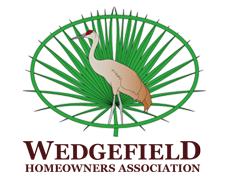“Stay. Staaay. Staaaaaayyy. Stay! You come back here right now!”
You want your dog to remain in one spot, regardless of where you go or what’s going on around them. A good start line stay lets you strategically position yourself on the agility course, but it is also needed in everyday life.And that is where you need to work on it first.
Does your dog even know what a ‘stay’ is? They can’t do it if they don’t understand what you are asking for. A good stay is basically a sit or down for long periods (duration) with you some distance away while other things are going on around the dog (distractions). Do you practice it in any form? Dog sitting, laying down, waiting for food, waiting at the door? The essential part of the stay is that the dog doesn’t ‘go’ until you tell them. You can’t use a “Stay” and then forget to explicitly release them in daily life. They will eventually get up and do their own thing, “breaking their stay”. This problem will continue to make any ‘official’ stay iffy.
So now we have 2 things important to train: the ‘stay’ and the ‘go’. You must train the dog to understand both concepts. Training a stay in basic obedience classes usually starts with you asking the dog for a sit. You can use a “Stay” command, or just expect the dog to remain in the last position you asked for. Then you start adding the 3 D’s (duration, distance, distractions) in baby steps. Example: in a quiet/boring location, ask for a sit, dog sits, you reward by handing them a small boring but an acceptable treat, wait a couple of seconds, reward, wait a couple of second, reward, wait a couple of seconds, then release the dog with an “OK” (or another less common word), reward or toss the treat so the dog stands. Next round: ask for sit, dog sits, wait a couple of seconds, reward, wait 5 seconds, reward, wait 3 seconds, reward, wait 5 seconds, “OK”, reward. Continue increasing the number of seconds (somewhat randomly) until you are up to a minute or more. That was adding Duration. Each practice session should take 5-7 minutes, tops. The next practice start out easy, but progress more rapidly to increase the duration.
In future practice sessions start with short durations, but add distance and movement. Ask for the sit, take a small step in some direction (still within arm’s reach of the dog), reward if the dog stays seated, take a small step in another direction, reward, continue on with 2-3 more small steps all around the dog, rewarding randomly. Release the dog with an “OK” and reward. Continue this routine with you taking more steps or quicker steps away and stepping back in to reward the dog. Don’t forget to release the dog every couple of minutes and reward the release.
Eventually, you should be able to walk (or dance) 10-20 feet away. Then take your practice outside, then to more exciting places. With more distractions, make distance and duration shorter to begin with.
“What do I do if the dog moves before being released?” Just quietly ask for the sit again and start over. Work at a level where the dog can succeed. If they are breaking the stay more than 20% of the time, make it easier for them by shortening duration, distance, or removing distractions.
For agility, you need a solid stay and a blast-off go. Which one is easier depends on the dog’s temperament and current emotional state.
For uninterested or more quiet dogs, they may be happy to stay. Reward the release with better treats or toy play than the boring ‘stay’ treats to encourage an enthusiastic go. Release walking away or eventually running away so they have to chase you to get the reward. Throw their reward for them to chase.
For excited, distracted, or overly enthusiastic dogs, it is easy to get a blast-off go (but maybe not when you want it). Work on impulse control and gradually increasing distractions. Better ‘stay’ treats may help and the actual release can act as the reward, no release treat needed.
While “Stay” may not seem like an agility skill, it makes agility much easier when you have it in the ring. But mainly, having a good Stay makes life with your dog much easier.
By Christy Gammage, PracticeMakesPawfect.com


